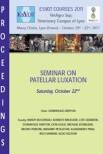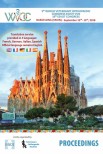Objective: To evaluate the effect of an induced synostosis with a screw on pronation and supination in cats.
Study design: Ex vivo biomechanical study.
Sample population: A total of 58 feline forelimbs.
Methods: A total of 58 cadaveric feline thoracic limbs were mounted on a custom-built jig with the elbow and carpus flexed at a 90° angle. To exclude any orthopedic disease, radiographs of the forelimbs were performed prior to the mechanical tests. Radioulnar synostosis was imitated with a 2 mm cortical screw through the radius into the ulna in the proximal (Group P; n = 54), middle (Group M; n = 52), and distal (Group D; n = 53) radial diaphysis. The angles of pronation and supination were recorded after manually applying a two-finger tight rotational force to the metacarpus. Rotational tests were performed without a screw (Group N) and with a screw in each of the aforementioned positions. Pairwise comparisons between the groups were performed based on their angles of rotation with a paired t-test with the Benjamini-Hochberg procedure and a mixed model ANOVA.
Results: Mean angles of rotation decreased between Group N (129.5 ± 15.9°) and all groups with imitated radioulnar synostosis to a mean angle of 37.5 ± 14.5° (p < .0001). Mean angles of rotation did not differ between the groups with imitated radioulnar synostosis.
Conclusion: Induced radioulnar synostosis decreases antebrachial rotation by more than two-thirds, regardless of location.
Clinical significance: Implants fixating the radius to the ulna should be avoided in cats, regardless where they are located along the radial diaphysis.









